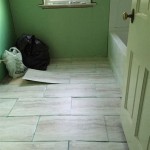Air Lock In Bathroom Sink Drain: Causes, Symptoms, and Solutions
An air lock in a bathroom sink drain is a common plumbing problem that can significantly impede the flow of water. It occurs when a pocket of air becomes trapped within the drainpipe system, creating a barrier that prevents water from draining properly. This phenomenon can lead to slow drainage, gurgling sounds, and, in severe cases, complete blockage of the drain. Understanding the causes, recognizing the symptoms, and implementing effective solutions are crucial for maintaining a functional and efficient bathroom sink.
Understanding the Mechanism of Air Locks
The core issue behind an air lock is the disruption of the natural pressure balance within the drain system. Drains are designed to operate based on gravity and pressure differentials. As water flows down the drain, it creates a slight vacuum behind it, which is normally alleviated by the vent system. The vent allows air to enter the drainpipe, equalizing the pressure and ensuring a smooth, unimpeded flow of water. When this vent system is compromised, or when certain plumbing configurations are present, air can accumulate and obstruct the water's passage.
The vent system typically consists of pipes that extend from the drain lines to the outside of the house, often through the roof. These vents allow air to enter and exit the drain system as needed, preventing the buildup of pressure or vacuum. If a vent becomes blocked, for example, by debris, snow, or even a bird's nest, the drain system loses its ability to regulate pressure. This lack of pressure regulation can lead to air becoming trapped in the drainpipe, forming an air lock.
Another contributing factor to air lock formation is the design and configuration of the plumbing itself. Long horizontal runs of drainpipe with insufficient slope can create low spots where air can accumulate. Similarly, complex plumbing configurations with multiple bends and turns can also increase the likelihood of air becoming trapped. In older homes, the build-up of mineral deposits or other debris inside the pipes can further restrict the flow of both water and air, exacerbating the problem.
Furthermore, partial blockages in the drainpipe can also contribute to air lock issues. A soap scum build-up, hair accumulation, or even small objects accidentally dropped down the drain can partially restrict the water flow. This restriction can create a pocket of air behind the blockage, which further impedes the draining process. The reduced water flow allows even more air to accumulate, creating a self-perpetuating cycle.
Identifying the Symptoms of an Air Lock
Recognizing the signs of an air lock is crucial for addressing the problem promptly and preventing more severe plumbing issues. Several telltale symptoms indicate the presence of trapped air in the drainpipe. One of the most common signs is slow drainage. If the water in the sink takes an unusually long time to drain, it is a strong indicator that something is obstructing the flow.
Another frequent symptom is a gurgling sound emanating from the drainpipe. This sound is often heard when water is draining, or even when other plumbing fixtures in the house are being used. The gurgling is caused by air being forced through the water in the drainpipe as the water attempts to flow past the air lock. The sound might be intermittent or constant, depending on the severity of the air lock and the amount of water being drained.
In more severe cases, the drain may become completely blocked, preventing any water from draining at all. This can occur if the air lock is substantial enough to completely obstruct the flow, or if the air lock is combined with other blockages in the drainpipe. A completely blocked drain is a clear indication of a significant plumbing problem that requires immediate attention.
Another less common, but still possible, symptom is the presence of foul odors emanating from the drain. While foul odors are often associated with other drain issues, such as the build-up of organic matter, an air lock can sometimes contribute to this problem. The trapped air can prevent the proper ventilation of the drain system, allowing odors to linger and escape into the bathroom.
Finally, bubbling in the toilet bowl when the sink is draining can also indicate an air lock or a problem with the venting system. This happens when air is displaced in the drain system and finds the path of least resistance, which can be through the toilet. This symptom suggests a more widespread issue within the plumbing system, rather than simply a localized problem in the sink drain.
Resolving Air Lock Issues: Practical Solutions
Addressing an air lock in a bathroom sink drain typically involves a combination of techniques aimed at clearing the trapped air and ensuring proper ventilation of the drain system. The specific method used will depend on the severity of the air lock and the accessibility of the drainpipe.
One of the first steps is to attempt to clear the air lock by using a plunger. A standard sink plunger can often dislodge the trapped air and restore normal drainage. To use a plunger effectively, ensure that there is enough water in the sink to cover the cup of the plunger. Create a tight seal around the drain opening with the plunger and then repeatedly plunge up and down for several minutes. The pressure created by the plunging action can often force the air lock out of the drainpipe.
If plunging does not resolve the issue, another approach is to try clearing the drain using hot water. Boiling water can sometimes dissolve grease and soap build-up that may be contributing to the air lock. Carefully pour a kettle of boiling water down the drain, taking precautions to avoid splashing and burns. The hot water can help to loosen any partial blockages and allow the trapped air to escape.
For more stubborn air locks, it may be necessary to disassemble and clean the P-trap. The P-trap is the curved section of pipe located beneath the sink. It is designed to trap debris and prevent sewer gases from entering the house. However, it can also be a common location for air locks to form. To clean the P-trap, place a bucket underneath the sink to catch any water, and then carefully loosen the slip nuts that connect the P-trap to the drainpipe. Remove the P-trap and thoroughly clean it, removing any debris or build-up. Reassemble the P-trap and ensure that the slip nuts are securely tightened.
If the air lock persists after cleaning the P-trap, the next step is to check the vent system for any blockages. This may involve inspecting the vent pipes on the roof for any obstructions, such as leaves, debris, or animal nests. Clearing any blockages in the vent system can restore proper ventilation and allow the trapped air to escape from the drainpipe. If accessing the roof vents is not feasible, a professional plumber can perform this task safely and effectively.
Chemical drain cleaners can be used as a last resort, but they should be used with caution. These cleaners contain harsh chemicals that can damage the drainpipes and pose a health hazard. If using a chemical drain cleaner, follow the manufacturer's instructions carefully and wear appropriate protective gear, such as gloves and eye protection. Avoid mixing different types of drain cleaners, as this can create dangerous fumes.
In cases where the air lock is persistent and resistant to these methods, it is advisable to consult a professional plumber. A plumber has the expertise and specialized tools to diagnose the cause of the air lock and implement the appropriate solution. They can also inspect the entire plumbing system for any underlying problems that may be contributing to the issue. This may involve using a drain snake to clear blockages deeper within the drainpipe, or even inspecting the drain lines with a camera to identify any cracks or damage.
Preventive maintenance plays a crucial role in preventing air locks from forming in the first place. Regularly flushing the drain with hot water can help to prevent the build-up of grease and soap scum. Using a drain strainer can prevent hair and other debris from entering the drainpipe. Avoiding the disposal of large quantities of grease or food waste down the drain can also help to prevent blockages. By taking these preventive measures, the likelihood of developing an air lock can be significantly reduced.

Experiencing Airlock In Your Plumbing System Robinson

Airlock In Pipes Here Is What To Do Mr Rooter Plumbing Of Central New Jersey
I Closed My Sink Drain Stopper And Now It Won T Open Again Is There Any Way That Can Repair This Without Hiring A Plumber Quora

Dealing With Airlock In Pipes Causes Symptoms And Solutions

How To Clear A Clogged Drain Reviews By Wirecutter

Signs Of An Air Lock In Your Plumbing System Rooter Hero

Diy Plumbing Blog How To Clean A Drain Trap

6 Ways To Fix Clogged Drains Keep Pipes Flowing Freely Horizon Services

Draining Plumbing With Compressed Air

Hot Water Airlock Problems Solved In 15 Diffe Ways
Related Posts







